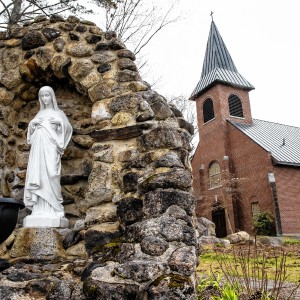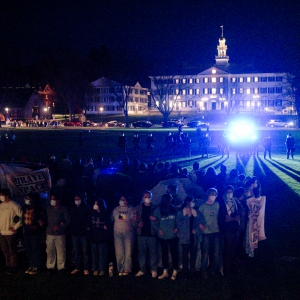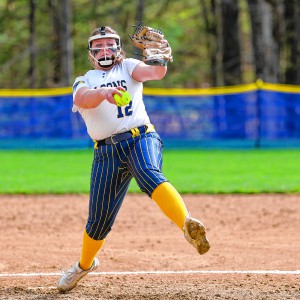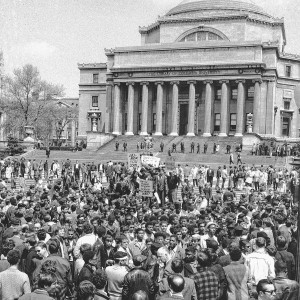Opinion: Mammogram screening needs to start at 40, not 50
| Published: 10-04-2023 6:00 AM |
Nick Perencevich is a semi-retired surgeon. He teaches Geisel/Dartmouth Medical students with whom he attends the twice a month Breast Cancer Tumor Board conferences at Concord Hospital.
In the last 7 years, here in Concord, the number of young women (50 and under) getting screening mammograms has been dropping and therefore the number of cancers detected has also dropped. This information is collected by the Concord Hospital Tumor Registry at the Payson Center for Cancer. I feel the public and medical community should understand what has happened and be concerned.
Several months ago the Monitor published a commentary by F.D. Flam, a Bloomberg opinion columnist, titled “Do earlier mammograms save more lives”. Ms. Flam’s perspective was that of the patient trying to understand the best recommendations on when to start her screening. Her commentary tried to explain why the U.S. Preventative Service Task Force (USPSTF) has just now changed its former recommendations to start screening at age 50 back to age 40.
The USPSTF started in 1984 and is not a U.S. government organization. It’s made up purposely of non-cancer experts, mostly primary care providers, so to make unbiased, non-self-serving recommendations on cancer screening for primary care providers, the public, and insurance companies. (New England Journal of Medicine, “Evidence over Politics, The USPSTF). Most patients get their mammograms ordered through their primary care providers and the USPSTF has a huge influence on who gets screened and who does not.
Concord Hospital for two decades has seen about 200-250 new breast cancer patients per year. Concord is big enough to reflect the breast cancer incident changes seen nationally year to year. Incidence is the number of new breast cancer cases per 100,000 population per year. There was a real drop for the decade 2000-2010 and then an ongoing trend upward starting in 2011. (CA: Cancer Journal Clinical, Cancer Statistics 2023)
In 2009 and again in 2016, the USPSTF recommended starting mammogram screening at 50, not 40. Their reasons then were many, but it was felt that younger women had less cancer and when they did it was an earlier stage. It was also felt then that diagnosing cancer in younger women was harder due to dense tissue and there was concern about going through the pain and expense of a negative biopsy. In looking back at 10 years of Concord Hospital data in 2016 we found that women under 50 represented 20% of all women with breast cancer (same as national data) and that half of those women presented with a lump and half presented on a screening mammogram (similar again to national data on all ages).
This was true for each of the 10 years. Back then we also looked at their stages of disease, and it was similar to older women, not what the USPSTF was saying. Knowing this, our plan was to carefully follow this group in our Concord Hospital Tumor Registry to see if the previously seen consistency over 10 years would change with the 2016 USPSTF recommendations.
We looked again in 2022 at our 50 and under group and realized that the number of women presenting with a lump stayed the same, but those patients picked up since 2016 on screening mammograms had dropped to half the old number and this happened mostly before COVID. Primary care providers look to the USPSTF for guidance. Based on the 2009 and 2016 USPSTF recommendations we know that a lot fewer mammograms happened in those 50 and under here in Concord and probably throughout the country.
Article continues after...
Yesterday's Most Read Articles
 A turbulent 50-year history: Inside the rise and fall of a tiny Catholic college in Warner
A turbulent 50-year history: Inside the rise and fall of a tiny Catholic college in Warner
 Update: Reactions for, against the more than 100 arrested at Dartmouth, UNH
Update: Reactions for, against the more than 100 arrested at Dartmouth, UNH
 Softball: Cassidy Emerson may have eight freshmen on her team, but the Falcons have glided to an 8-1 start
Softball: Cassidy Emerson may have eight freshmen on her team, but the Falcons have glided to an 8-1 start
 Franklin police arrest man after accidental shooting Wednesday
Franklin police arrest man after accidental shooting Wednesday
 Opinion: Sports have never been fair
Opinion: Sports have never been fair
 Hopkinton chocolatier transforms chocolates into works of art
Hopkinton chocolatier transforms chocolates into works of art
Ms. Flam Bloomberg’s commentary referenced Dr. John Wong, professor of medicine at Tufts, who says the reason the USPSTF went back to 40 was because of “a higher number of detected cancers among women in their 40s.” As stated above, the incidence trend of breast cancer of all ages started up again in 2011. It begs the question, why the USPSTF in 2016 continued to recommend starting at 50?
Over the years, Medicare and Medicaid have not followed USPSTF recommendations for breast cancer. They’ve used their own experts in the breast cancer field at the CDC, the NIH and academic centers like Dana Farber/Brigham and Mass. General and they have stayed at starting at 40. Most women 40-65 have private insurance or no insurance. Those private insurance companies pay for the screening mammograms that the USPSTF recommends, not what the government and academic experts recommend.
In my mind, the recent recommendation change from the USPSTF came not because things changed since 2016, but because they realized they were wrong in the first place. There’s a trend these days to not follow expert advice as if all experts are in it for themselves. It’s an issue of who you trust. Historically the incidence data on cancer has been excellent. For over 60 years every pathologist in the country who diagnoses cancer has had to report to their state’s incidence registry. Therefore state and national incidence trends are very timely and accurate. I feel if the USPSTF wants to help the public it should look at incident data more carefully and at least consult cancer experts. USPSTF recommendations have serious consequences. Their recent recommendation to start at 40 is welcome and hopefully, we will have younger women screened like before.
Having said all the above, we now see a very recently published perspective article by Steven Woloshin, MD. et al in the New England Journal of Medicine titled “The New USPSTF Mammography Recommendations-a Dissenting View,” urging us to stay at age 50. It looked primarily at breast cancer mortality which has been slowly decreasing since the 1990s. The reason for fewer deaths is finding the disease earlier via screening, better treatments once diagnosed, and fewer patients getting breast cancer which was true until about 2011. To my surprise, the article didn’t acknowledge the rising incidence, the main reason the USPSTF changed its recommendation. I found the article misleading.
Concord regional citizens should know that way before the inception of the Payson Center 20 years ago, the Concord Hospital Tumor Registry has kept excellent cancer records and our data does reflect national data and staging and treatment outcomes are better than national averages. This is true in New England in general because of higher screening rates for all cancers and because of the proximity of many excellent cancer centers like Payson.
Collecting and looking at our own data and comparing ourselves with others at all levels is the way to gauge our quality and improve. We often see real cancer trends years before being published. Yes, the public should be concerned as to what happened and what we learned by looking at our own data on screening women 50 and under, but I think we’re on the right track moving forward.
]]>


 Opinion: Seeking wisdom in literature
Opinion: Seeking wisdom in literature Opinion: It all started at Columbia
Opinion: It all started at Columbia Opinion: Students resist: Berkeley to Gaza, Columbia to Jenin, UNH to Rafah
Opinion: Students resist: Berkeley to Gaza, Columbia to Jenin, UNH to Rafah Opinion: New Hampshire, it’s time to acknowledge the stories of suffering
Opinion: New Hampshire, it’s time to acknowledge the stories of suffering
